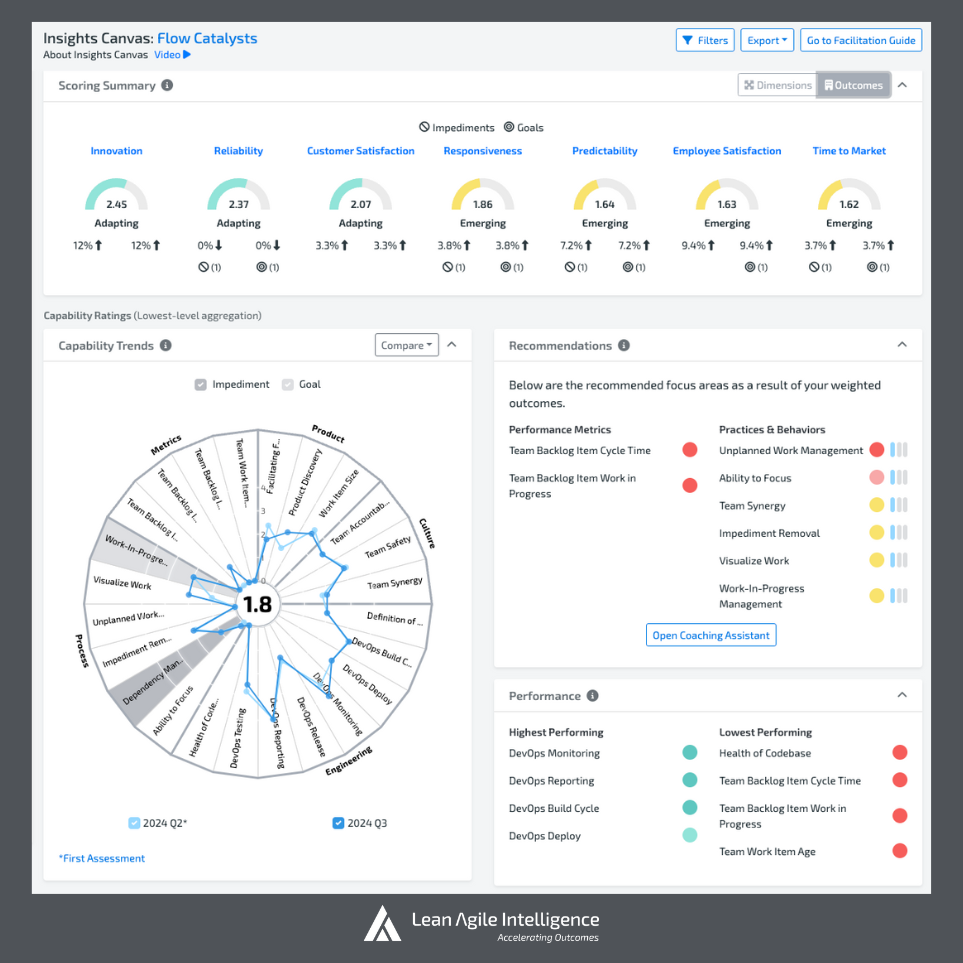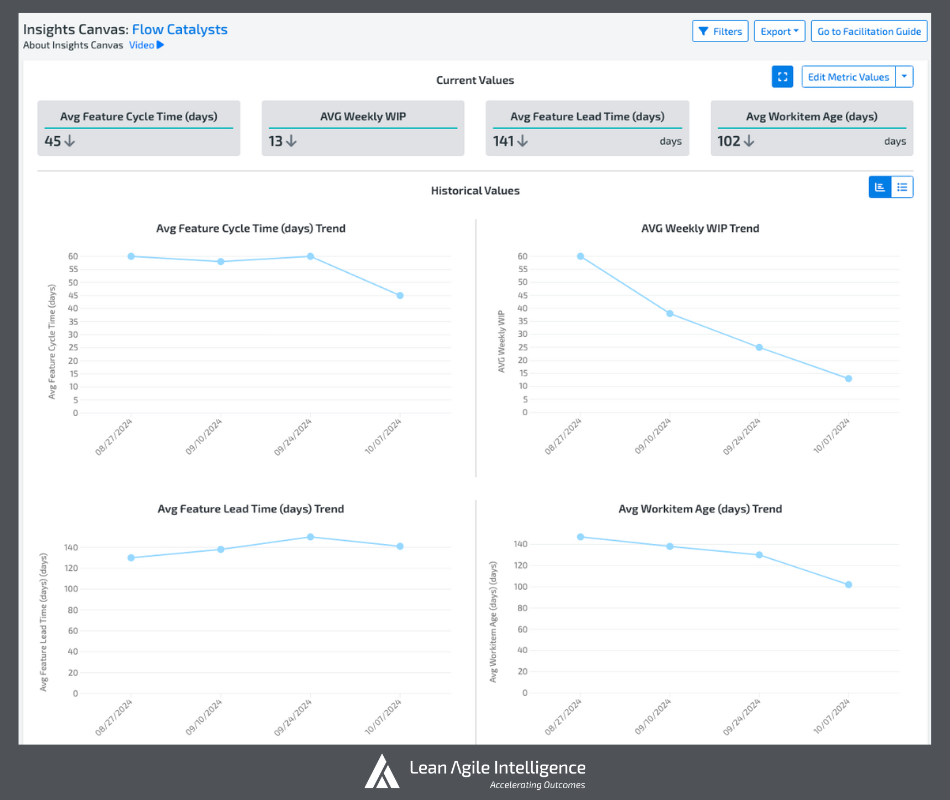
Today, organizations are under constant pressure from rapid technological advancements, globalization, and evolving consumer behavior. These external challenges are compounded by the internal complexity of organizations, which are intricate systems with numerous moving parts required to deliver continuous value to stay competitive. Flow metrics have gained popularity as crucial tools for measuring system performance, providing snapshots of productivity. However, while insightful, flow metrics alone often fail to explain the why behind the numbers.
Understanding Flow Metrics
Flow metrics like cycle time, throughput, work-in-progress (WIP), and work item age offer key insights into productivity. They help teams identify bottlenecks, assess capacity, and predict outcomes, prompting early critical questioning. Additionally, they foster alignment and collaboration across silos, promoting an outcome-driven focus on flow. For a deeper dive into how organizations can harness these metrics to actively drive performance improvements, read more here.
The Limitations of Flow Metrics
Flow Metrics are descriptive but not explanatory. In other words, they do an excellent job at “describing” what is happening but fail to “explain” why a system performs in a particular way. While they provide valuable insights into process speed and throughput, without proper context, they can feel like looking into a black box, leaving critical details unexplained. The more complex the system of work, the more evident it becomes that flow metrics alone don’t provide a deep enough understanding of what is impeding optimal productivity and value delivery.
For example, we recently worked with a large client who had high expectations that limiting WIP would unlock free-flowing value. While it helped, we still could see bottlenecks that the metrics couldn’t fully explain, leading us to develop hypotheses about their causes.
Our colleagues at ProKanban.org also emphasize this point, as they mention in their Kanban guide that flow metrics represent only the minimum required for operating a Kanban system. Kanban system members may, and often should, incorporate additional context-specific measures to support data-informed decision-making.
A Balanced Measurement Strategy
Complex environments necessitate a balanced measurement strategy that integrates flow metrics with additional measures. These other metrics provide color to the black-and-white metric of "flow". They can help not just describe the system, but also explain it and show a path to improvement.
- Quality of Work: Ensuring outputs are reliable with minimal defects.
- Value Delivered: Measuring the actual impact of produced work.
- Employee Sentiment: Evaluating the human experience to guarantee engagement and sustainability.
- Practice Proficiency: Assessing if teams are improving skills crucial for achieving goals.
Learn more about creating your own measurement strategy here
This holistic view not only sheds light on the details of the system but also encourages organizations to avoid narrow focus and make trade-offs benefiting the entire system.

Incorporating the Human Element: Why It's Essential
Many performance metrics overlook a fundamental productivity influencer: the human element.
"The well-being, engagement, and proficiency of team members are vital for success but often overlooked and underestimated in traditional productivity measurements." - Michael McCalla
Why the Human Element is Overlooked
The challenge of measuring the human side of productivity lies in its intangible, subjective nature, which varies across teams and individuals. Consequently, many organizations prefer straightforward metrics like cycle time and throughput. However, without understanding the human factors influencing these metrics, organizations only see part of the picture, leading to inefficiencies and attrition. Gathering this mix of qualitative and quantitative sentiment can be difficult.
How Human Factors Affect Flow
Your greatest asset is the people doing the work—your teams. They understand the intricacies of the work, the challenges they face, and the barriers that may slow down productivity. For example, a team might have degrading cycle times, but managers may overlook critical issues without understanding the underlying reasons. These could include the team adhering to an inefficient process, lacking the necessary skills, or not receiving sufficient collaboration from others. Such human factors are complexities that no performance metric can fully capture.
Self-Assessments as a Tool for Measuring the Human Element
Self-assessments are a simple, cost-effective tool for measuring the human element of a system. They allow teams to reflect on their performance, identify areas for improvement, and provide feedback on systemic issues that may be affecting productivity. The results of these assessments come in the form of qualitative insights that complement performance metrics, offering a more complete picture. To implement structured maturity assessments within Agile teams, consider this guide on Agile Team Maturity Assessments.
Moreover, self-assessments don’t just measure individual perspectives; with the right assessment platform, they can aggregate feedback from every contributor across the entire system. This gives leaders the confidence to act on the collective intelligence gathered, enabling more informed decision-making.
Making the Human Element Actionable
Collecting feedback is only the first step; organizations must act on it. Self-assessments bring human-related frictions and bottlenecks to light, allowing leaders to address them proactively through better resource allocation, targeted training, or workload adjustments.
I delivered this talk on “Why Flow Metrics Are Not Enough” with Agile Austin. You can watch it on demand here.
Conclusions
Flow metrics are useful for assessing system performance, but they often fail to explain underlying issues, particularly in complex environments. Organizations should complement flow metrics with additional measures such as work quality, value delivered, and human factors to gain a full understanding. Using tools like self-assessments to capture the human element offers deeper insights into team dynamics, skills, and systemic bottlenecks that metrics alone cannot reveal. This balanced approach empowers leaders to make informed decisions and drive significant organizational improvements.
Focused on flow? Go beyond flow metrics. Equip teams with the skills they need and empower leaders to identify and address barriers hindering optimal productivity and value delivery with the Lean Agile Intelligence Flow Accelerators Self-Assessment.
To learn more or to evaluate Lean Agile Intelligence in your context, contact us today!

%20(1400%20x%20700%20px).png)